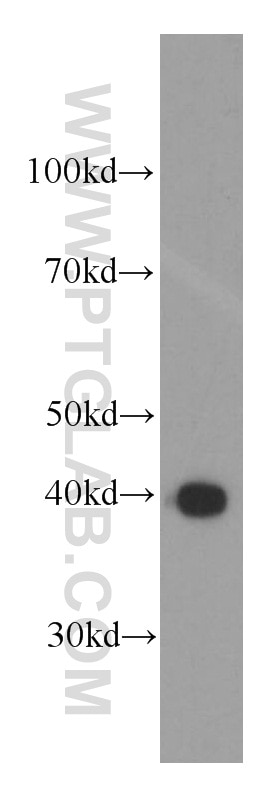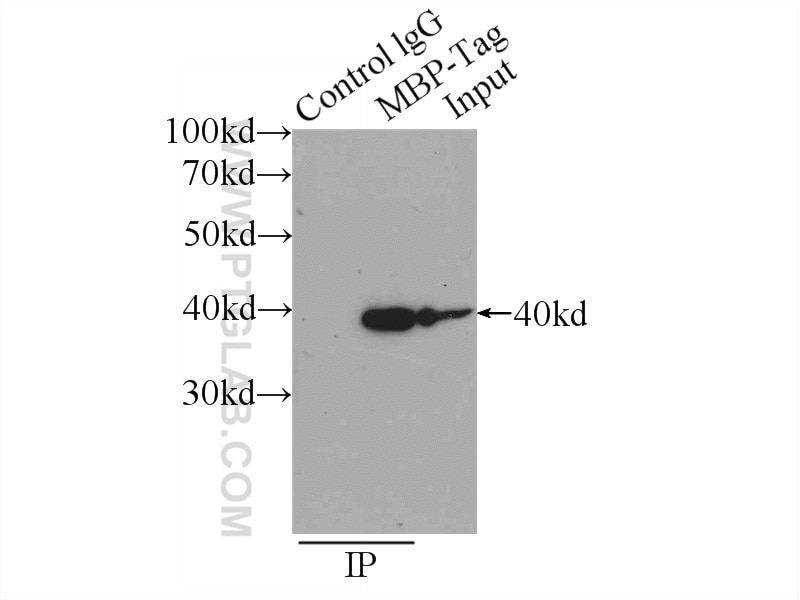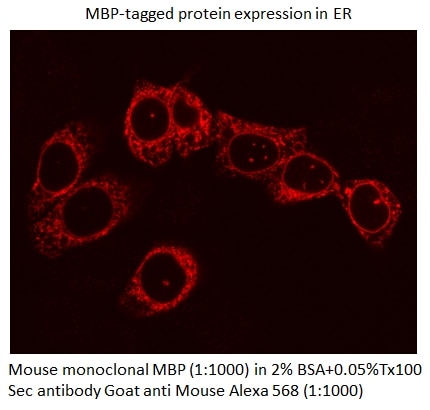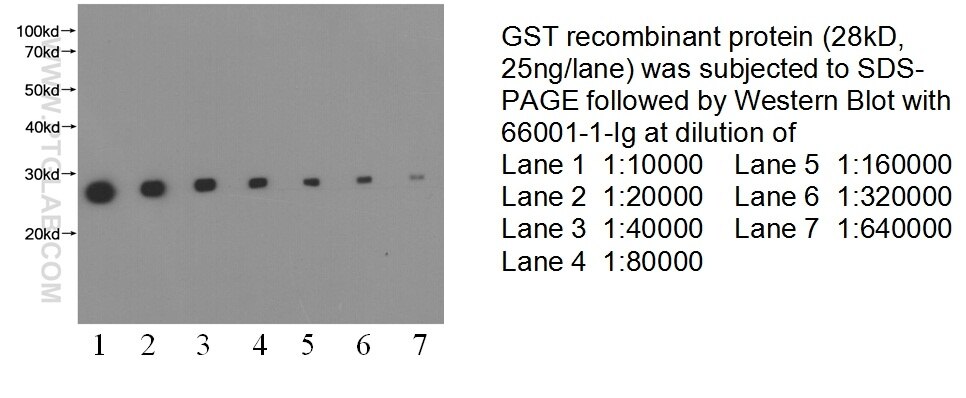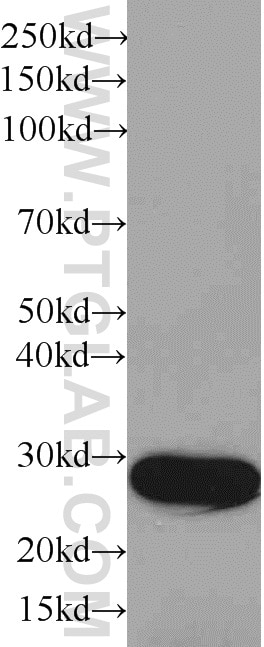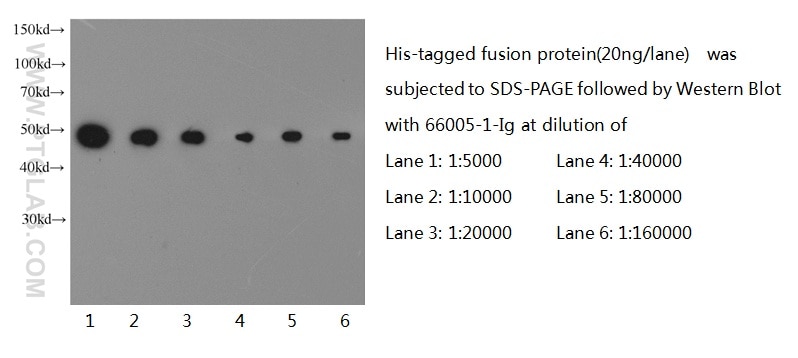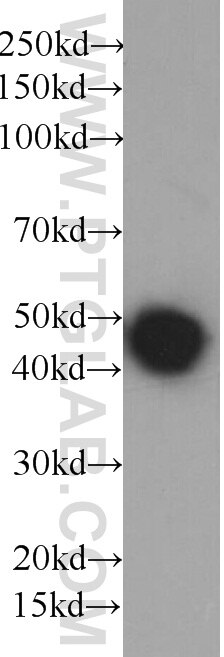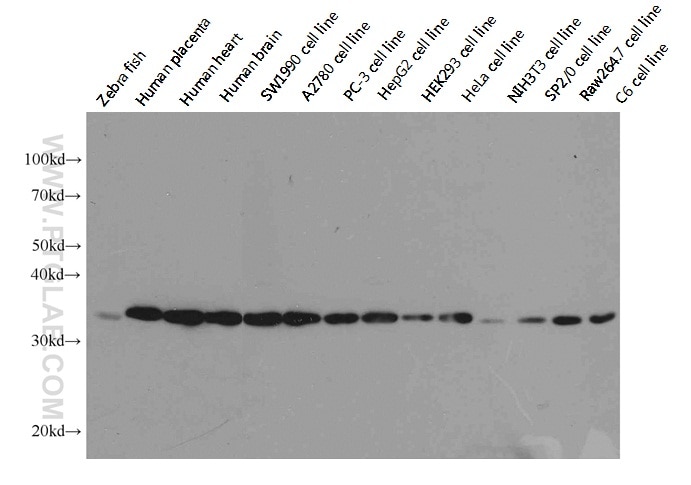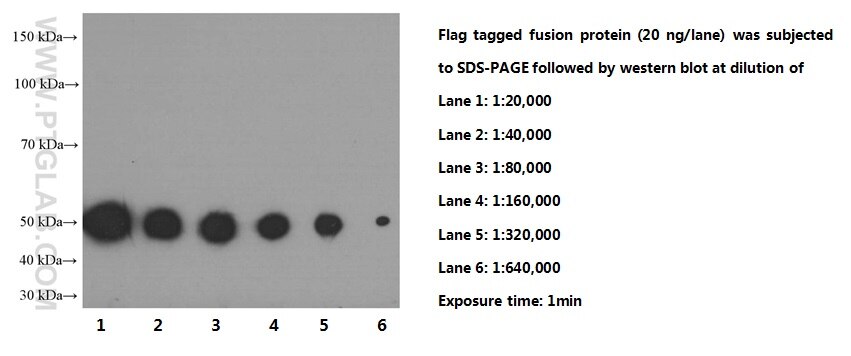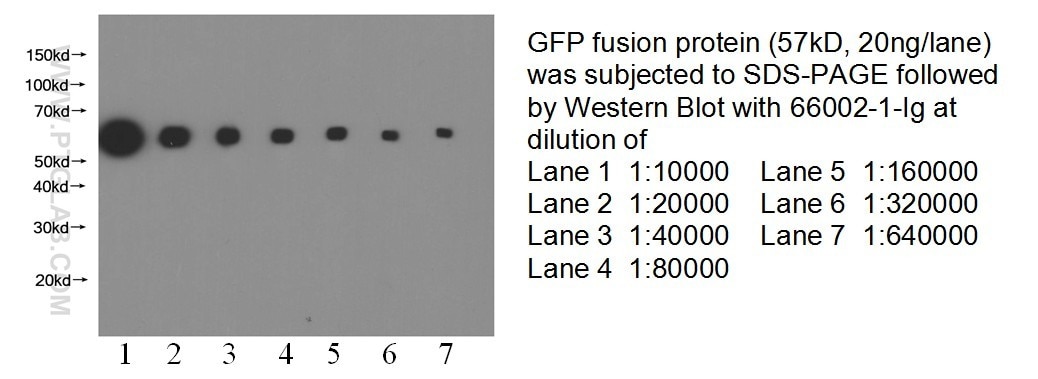MBP tag Monoklonaler Antikörper
MBP tag Monoklonal Antikörper für IF, IP, WB, ELISA
Wirt / Isotyp
Maus / IgG2a
Getestete Reaktivität
rekombinanten Protein und mehr (3)
Anwendung
WB, IP, IHC, IF, CoIP, ELISA
Konjugation
Unkonjugiert
CloneNo.
4C6H4
Kat-Nr. : 66003-1-Ig
Synonyme
"MBP tag Antibodies" Comparison
View side-by-side comparison of MBP tag antibodies from other vendors to find the one that best suits your research needs.
Geprüfte Anwendungen
| Erfolgreiche Detektion in WB | Recombinant protein |
| Erfolgreiche IP | Rekombinantes Protein Protein |
| Erfolgreiche Detektion in IF | Transfizierte Zellen |
Empfohlene Verdünnung
| Anwendung | Verdünnung |
|---|---|
| Western Blot (WB) | WB : 1:1000-1:8000 |
| Immunpräzipitation (IP) | IP : 0.5-4.0 ug for 1.0-3.0 mg of total protein lysate |
| Immunfluoreszenz (IF) | IF : 1:500-1:2000 |
| It is recommended that this reagent should be titrated in each testing system to obtain optimal results. | |
| Sample-dependent, check data in validation data gallery | |
Veröffentlichte Anwendungen
| WB | See 25 publications below |
| IHC | See 1 publications below |
| IF | See 4 publications below |
| IP | See 4 publications below |
| CoIP | See 2 publications below |
Produktinformation
66003-1-Ig bindet in WB, IP, IHC, IF, CoIP, ELISA MBP tag und zeigt Reaktivität mit rekombinanten Protein
| Getestete Reaktivität | rekombinanten Protein |
| In Publikationen genannte Reaktivität | human, Maus, Ratte |
| Wirt / Isotyp | Maus / IgG2a |
| Klonalität | Monoklonal |
| Typ | Antikörper |
| Immunogen | MBP tag fusion protein Ag0942 |
| Vollständiger Name | MBP tag |
| Berechnetes Molekulargewicht | 40 kDa |
| Beobachtetes Molekulargewicht | 40 kDa |
| Gene symbol | |
| Gene ID (NCBI) | |
| Konjugation | Unkonjugiert |
| Form | Liquid |
| Reinigungsmethode | Protein-A-Reinigung |
| Lagerungspuffer | PBS mit 0.02% Natriumazid und 50% Glycerin pH 7.3. |
| Lagerungsbedingungen | Bei -20°C lagern. Nach dem Versand ein Jahr lang stabil Aliquotieren ist bei -20oC Lagerung nicht notwendig. 20ul Größen enthalten 0,1% BSA. |
Hintergrundinformationen
Protein tags are protein or peptide sequences located either on the C- or N- terminal of the target protein, which facilitates one or several of the following characteristics: solubility, detection, purification, localization and expression. Maltose binding protein(MBP) is the 370 amino acid product of the E.coli mal E gene. MBP is a useful affinity tag that can increase the expression level and solubility of the resulting tagged protein. The MBP tag also promotes proper folding of the attached protein. Plasmid vectors have been constructed utilizing the MBP domain that allow the synthesis of high levels of MBP-fusion proteins that can be purified in a one step procedure by affinity chromatography cross linked amylose resin. Once bound to amylose, the MBP protein can then be separated from the target protein by cleavage by coagulation Factor Xa at a specific four residue site. Alternatively, the intact fusion protein can be specifically eluted from the resin by the addition of excess free maltose. Subsequent to elution, MBP fusion protein can be visualized either by Western blot analysis or immunoprecipitation using antibodies specific for the MBP-tag. An antibody to MBP can also be used to isolate or detect expression of the protein.
Protokolle
| Produktspezifische Protokolle | |
|---|---|
| WB protocol for MBP tag antibody 66003-1-Ig | Protokoll herunterladen |
| IP protocol for MBP tag antibody 66003-1-Ig | Protokoll herunterladen |
| Standard-Protokolle | |
|---|---|
| Klicken Sie hier, um unsere Standardprotokolle anzuzeigen |
Publikationen
| Species | Application | Title |
|---|---|---|
Nat Struct Mol Biol CRISPR-Cas9-based functional interrogation of unconventional translatome reveals human cancer dependency on cryptic non-canonical open reading frames | ||
Nat Commun Structural insights into pathogenic mechanism of hypohidrotic ectodermal dysplasia caused by ectodysplasin A variants | ||
Nat Commun UV-B irradiation-activated E3 ligase GmILPA1 modulates gibberellin catabolism to increase plant height in soybean | ||
Mol Cell Amelioration of hepatic steatosis by dietary essential amino acid-induced ubiquitination. | ||
Circ Res Unspliced XBP1 Confers VSMC Homeostasis and Prevents Aortic Aneurysm Formation via FoxO4 Interaction. | ||
Cell Death Differ Lysine methylation of PPP1CA by the methyltransferase SUV39H2 disrupts TFEB-dependent autophagy and promotes intervertebral disc degeneration |
